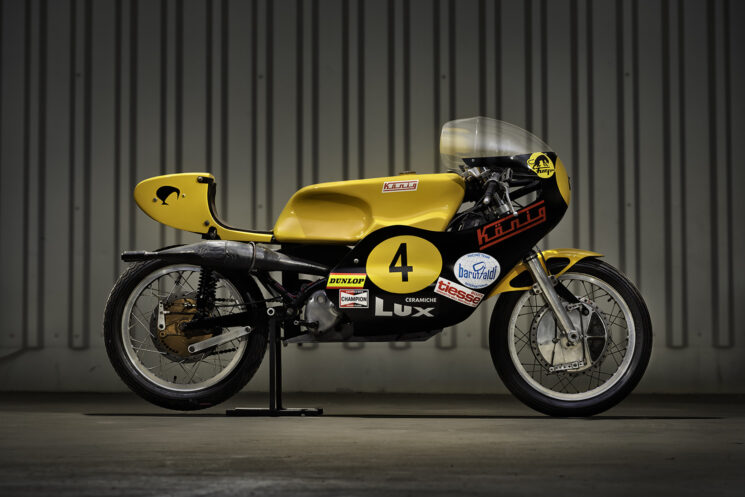
On August 11, 1973, during the GP race at the Silverstone Circuit in England, New Zealander Kim Newcombe found himself in the lead after just six laps. Approaching turn 15, the brakes began overheating, sending his König 500 careening off the track. Fighting for control, Newcombe was determined to stay in the race as he approached Stowe Corner at uncontrollable speed…
Five years earlier, Kim Newcombe, a marine engine mechanic with a penchant for boat and dirt bike racing, teamed up with renowned German outboard motor designer and specialist, Dieter König. Newcombe took over the development of a defunct motorcycle project built around a boat engine Dieter had conceived.
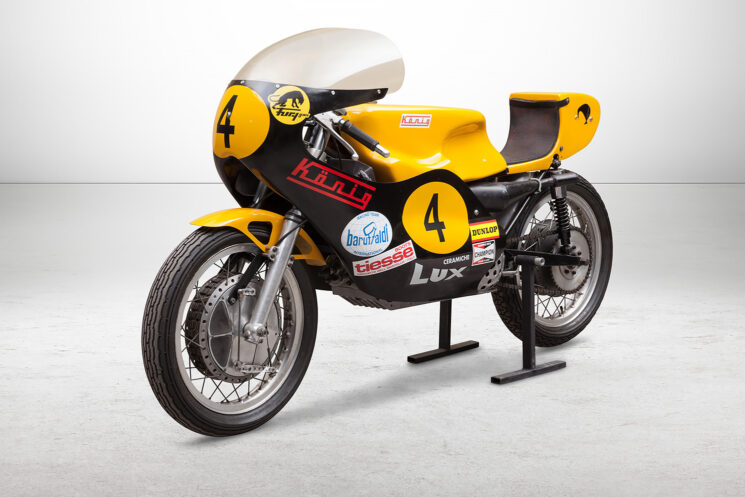
The heart of the resulting machine was a powerful 500cc four-cylinder, two-stroke boxer engine cradled in a custom frame design. Rather than mounting the engine with the cylinders crosswise into the wind in the style of a BMW airhead, Newcombe mounted the flat-four with the cylinders running lengthwise, keeping the bike narrow, adding length, and creating its characteristic low, elongated look.
With its unique engine, sleek fuel tank, and basic cockpit, the bike was a powerful lightweight, producing over 80 horsepower in a sub-300-pound package.
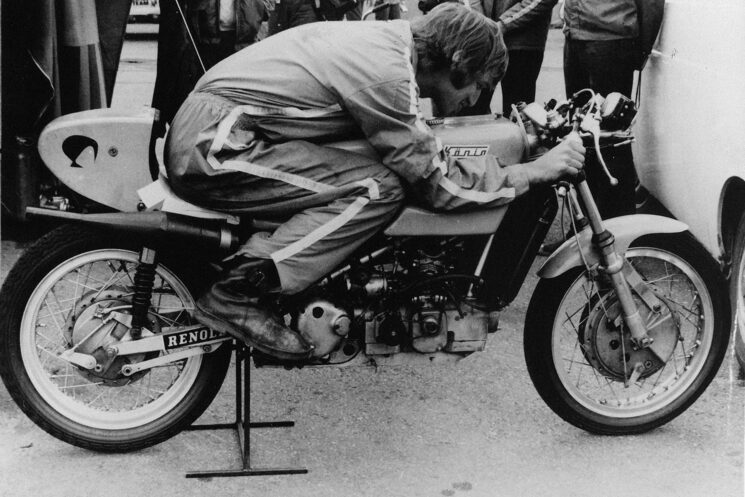
Though a highly skilled dirt bike racer, Newcombe was inexperienced on asphalt. But with few other options, he became the primary rider for König and quickly blossomed into one of the best racers on the circuit.
Word spread of the Kiwi on the German-made bike that he helped design, build and maintain, earning him a spot as a fan favorite. In just his third season of racing, he was close to winning the overall 1973 World Cup.
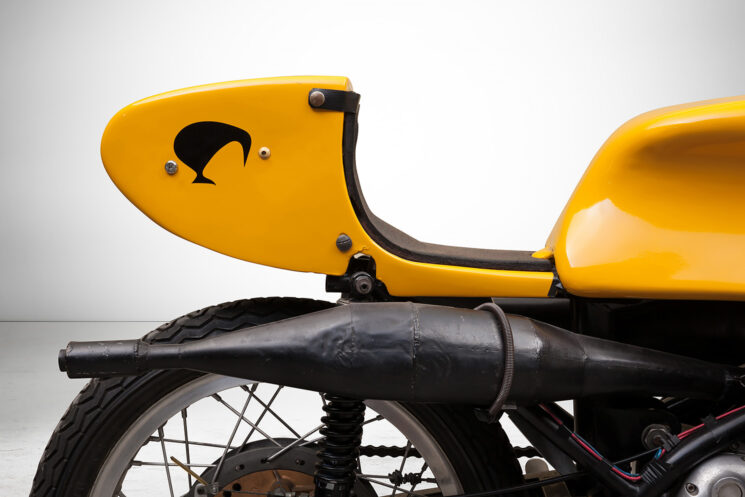
Earlier in the day, on August 11, an upset Newcombe expressed his concern to Silverstone race officials about the fact that there were no hay bales in place at turn 15—Stowe Corner. The officials—in a reflection of the attitude toward rider safety in those days—dismissed his request and threatened to have him expelled from the race. A defeated Newcombe backed down and took his place on the grid.
On lap six, heading into Stowe Corner, the brakes on the König 500 overheated and failed. Unable to maintain control, he suffered a fatal crash into the very wall he had feared from the start.
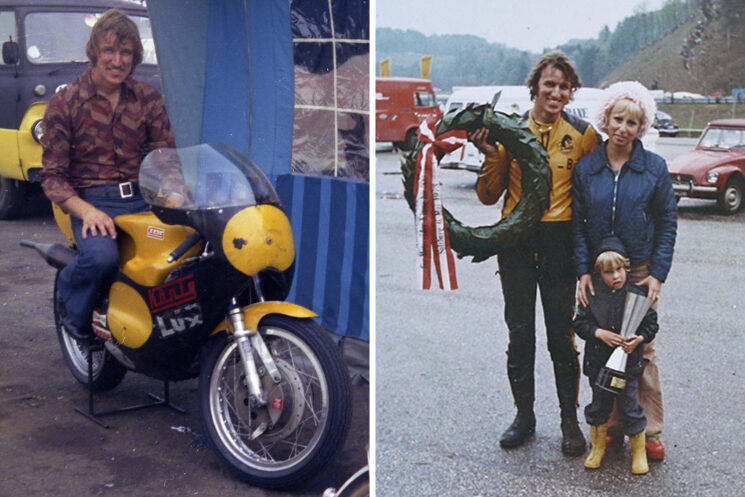
Posthumously receiving second place in the world championships that year did little to erase the pain of loss for his wife Janeen, their four-year-old son Mark, and Newcombe’s legion of fans. The story of his triumph and tragedy was documented in the 2005 award-winning film, Love, Speed and Loss and Tim Hanna’s 2010 book, The Kiwi on the König.
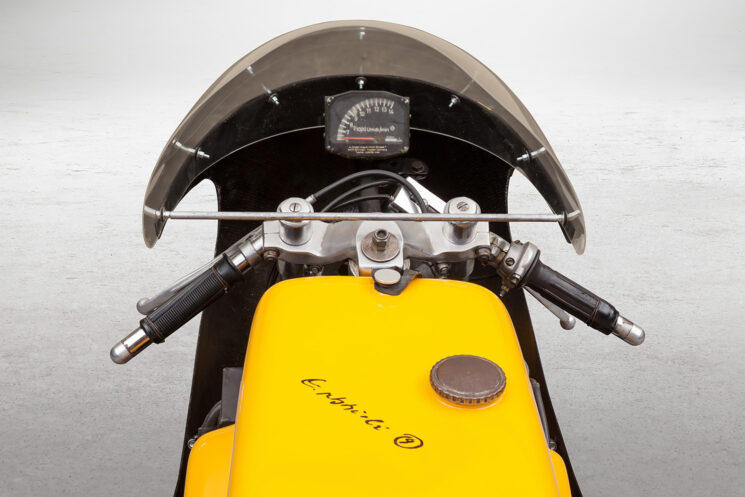
Traces of his yellow racing suit can still be seen on the seat of the König 500. The front wheel and brake were replaced after the crash and the bike continued to be used on the Italian racing circuit throughout the 1970s — the signature of nine-time world champion, Carlo Ubbiali, is still visible on the fuel tank today.
The König 500 is a nod to Newcombe’s talent as a designer, builder, and rider, and ultimately a testament to his legacy in racing history.
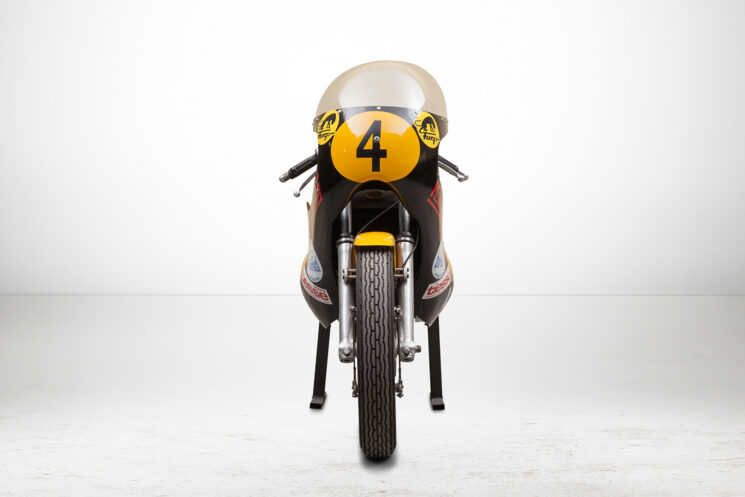
This article first appeared in issue 025 of Iron & Air Magazine, and is reproduced here under license | Words by Michael Hilton | Images by auctionata.com, Martyn Perry, Volker Rausch
Sidecar Subject: Kim Newcombe’s König 500Origins Facing Adversity Track Triumphs Key Points |